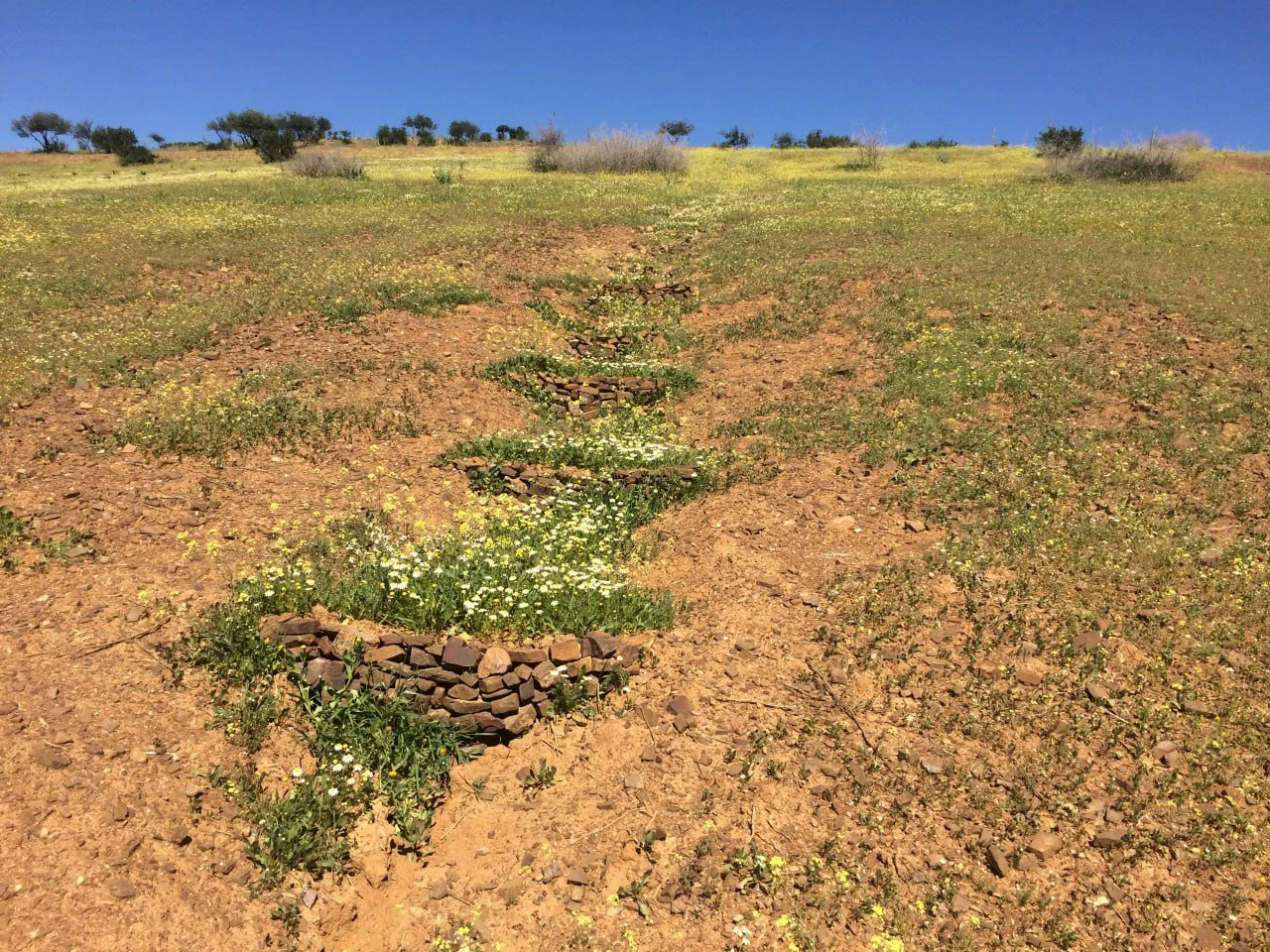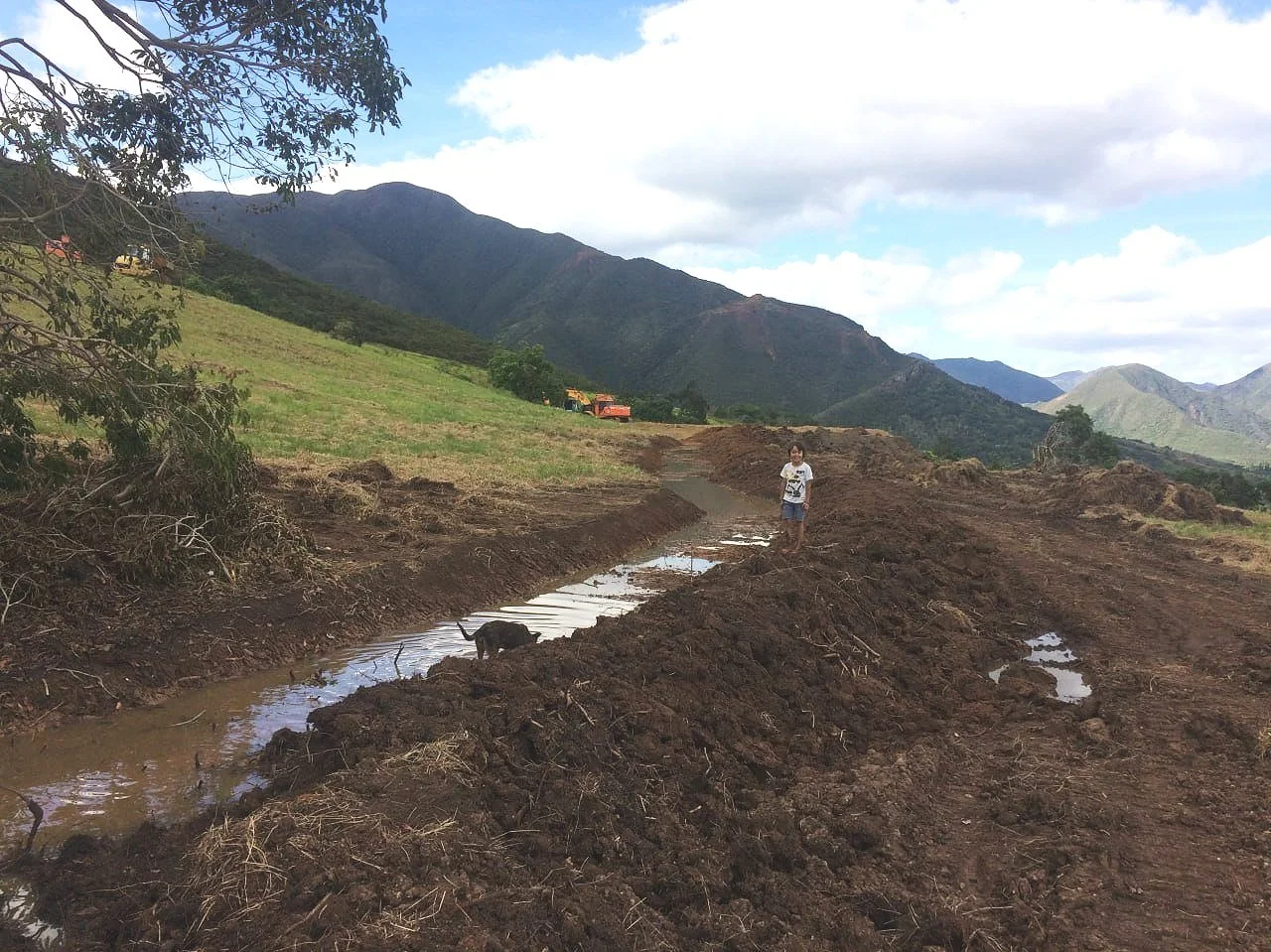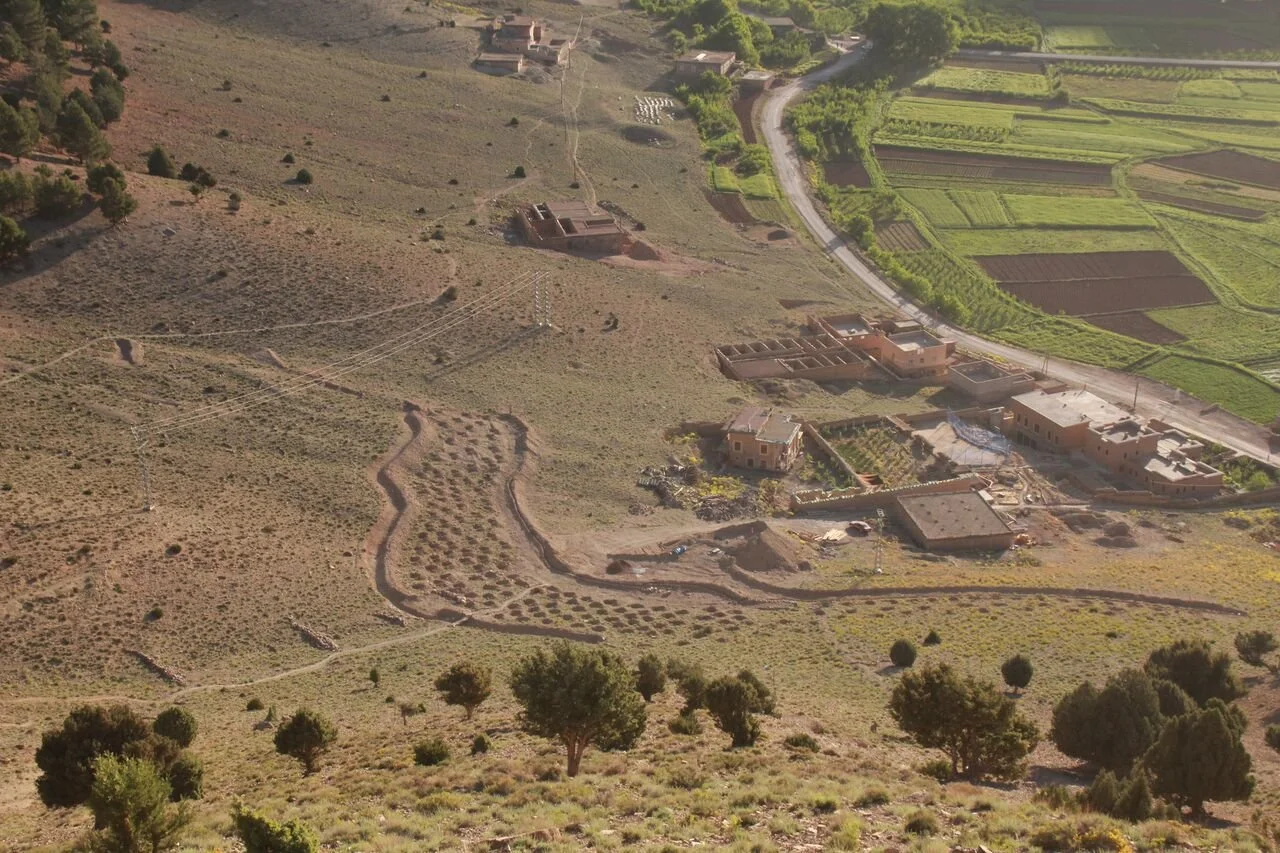Why We ‘Plant The Rain’ Water’s Essential Role
It all starts with good design with land & vegetation.
“Plant The Rain” is a phrase and teaching passed down from a wise farmer in Africa to permaculture teacher Brad Landcaster, a potent reminder to focus our land-based designs on securing water for our systems first and foremost. Water capture in any area, small or large, for home growers, family farmers, communities or eco-villages must be the primary focus of any supportive growing system. This need is essential to catch and impound every drop of water for our survival and a successful nature-based growing system. An interconnected permaculture system usually includes some type of earthworks for increased yields land restoration, land management, or home regenerative growing systems.
There are two reasons to do Earthworks. Earthworks is designing a landscape for water harvesting & storage and making sound choices about whether to intervene in a given area.
Terra-forming for natural human habitat, e.g housing sites, road access, terraces on steep slopes, net and pan for reforestation.
When designing for water harvesting, infiltration and water storage structures in landscapes.
” Earthworks objective is to move as little Earth as possible for the greatest effect of water capture while retaining our greatest asset, topsoil,” to be reapplied after we finish “Planting The Rain” and molding the landscape. -Doc Spice Permaculture Designer.
We should always look to soils to ‘Plant The Rain’ first as this mode is our most economical and lets nature do its innate job. Remember—One gram (1g) of humus (organic matter) holds eight grams (8g) of water. Incredible right?
Around the world, in many bioregions, we have issues with water weather extremes which at times can even lead to injury or loss of life in our environment, especially in drylands where areas of flooding are common. Yet, it doesn’t have to be this way. When we purposefully rebuild our soils and fix/support land degradation, we can move water back into its natural cycles, including infiltration, often with simple and straightforward design implementations. By aiding the existing land environment to have better water infiltration. (absorption of water into Earth’s soil layers), we support the water cycle further.
Water infiltration issues happen in all climates, wet or dry.
To remedy these issues in wet or dry climates, we always begin with three steps —observing, documenting and understanding rainfall amounts received in an area. Next, we focus on how it differs throughout the seasons, how much rain comes in 24 hours, how much water is already in the soil, and the complete water catchment area of a site or yard. With this critical information gathering, we can calculate the water volumes for storage and assess needs with greater clarity.
It is also essential to research traditional agricultural systems in use and those of the past; here, we can find great insight into how to reinstate or mimic these traditional systems for our local bioregions around the world.
Examples of two Earthworks systems designed and implemented by Permaculture Designer David Spicer:
New Caledonia System
New Caledonia System By Doc Spice
New Caledonia- High rainfall, wet/dry tropics using the traditional terrace system of Kanak and Polynesia.
When we look at traditional systems for learning, it’s important to ask why they were built that way. Why do they create rice paddies, for example? What we can learn and use is that they are all about deposition systems and working with water as a transporter of minerals and organics, which we all need.
2. Morocco Rock Wall System
Morocco System By Doc Spice
In the drylands of Morocco, rock-wall builds are used here as the retainment for terraces in the valleys.
The intention is to create physical structures to retain water. Over time the water flow builds the soil through the depositions. Water passes over rock, leaving the soil behind, creating a deep soil layer to grow crops in. The focus is always on getting that water away from the sun into the ground.
High Atlas Morocco System By Doc Spice
“Remember that design should simplify when we go out on the scale, into what’s called broadacre; in permaculture, we call it zones 3 and 4; from my hands-on experience laying out a basic design working with water creates a pattern of action more intense than what is currently accessible. Good access creates good interactions, I’ve found.” -Doc Spice
What to look for to know if we have soil degradation and water infiltration issues on our lands.
Healthy soil temporarily stores water, making it available for plant root uptake and habitat for soil organisms. When soil is lacking in microbial life, fungi and organic matter, it is common to have water holding & infiltration issues like—
Water pooling in areas of yards or fields for long periods, not soaking into the ground.
Plant life struggling to thrive, yellowing leaves (from too much water or too little not getting down to roots)
No new plant growth or slow growth, or even death of plants.
Much of what can be implemented as a land-based designer (or even home grower) is from observation, weed events and their root structures. David explains a permaculture perspective, '“For observation, I take a shovel on site to dig a small hole investigating how deep plant roots are going down; this tells us a big story. For one, observing evidence of overland water flows. For example, we can often see organic matter caught by vegetation. This tells me water is not infiltrating soils, or maybe we call it dirt at this stage because it’s not healthy soil yet.”
What vegetation to plant to support better water infiltration?
That all depends on our local area. A vast diversity of plants is always best, focusing on native plants in a desired location. Think polycultures, interplanting, layers of food forests and cover crops. Plant diversity supports soil microbial diversity, which helps the creation of humus and improves our soil’s water-holding ability, as we have discussed above.
In the last few years, there has also been excellent research on multi-species cover crops which helps microbial life in the soil create something known as a Quorum Effect. “In the microbial world, quorum refers to density-dependent behavior that regulates gene expression in the microbial community. If microbes don’t have a quorum, they can’t do their work,” says Dr Jones, an Australian soil ecologist. “Microbes use quorum sensing to collectively coordinate behavior and achieve certain outcomes. Microbes can’t see or hear or speak, but they communicate with each other extremely well and are incredibly well organized. This occurs in bacteria, archaea, and fungi.” —Dr Christen Jones.
Dr. Jones, for example, and others have led the charge with this good work on plant biodiversity, microbial life concerning cover crops and teaching of its importance—something to further research for curious minds.
With an open heart to learn, observe and mimic nature we can all ‘Plant The Rain, and focus on water holding capacity in our soils. Water Infiltration = Soil Hydration = Water Availability For Plant Life.




